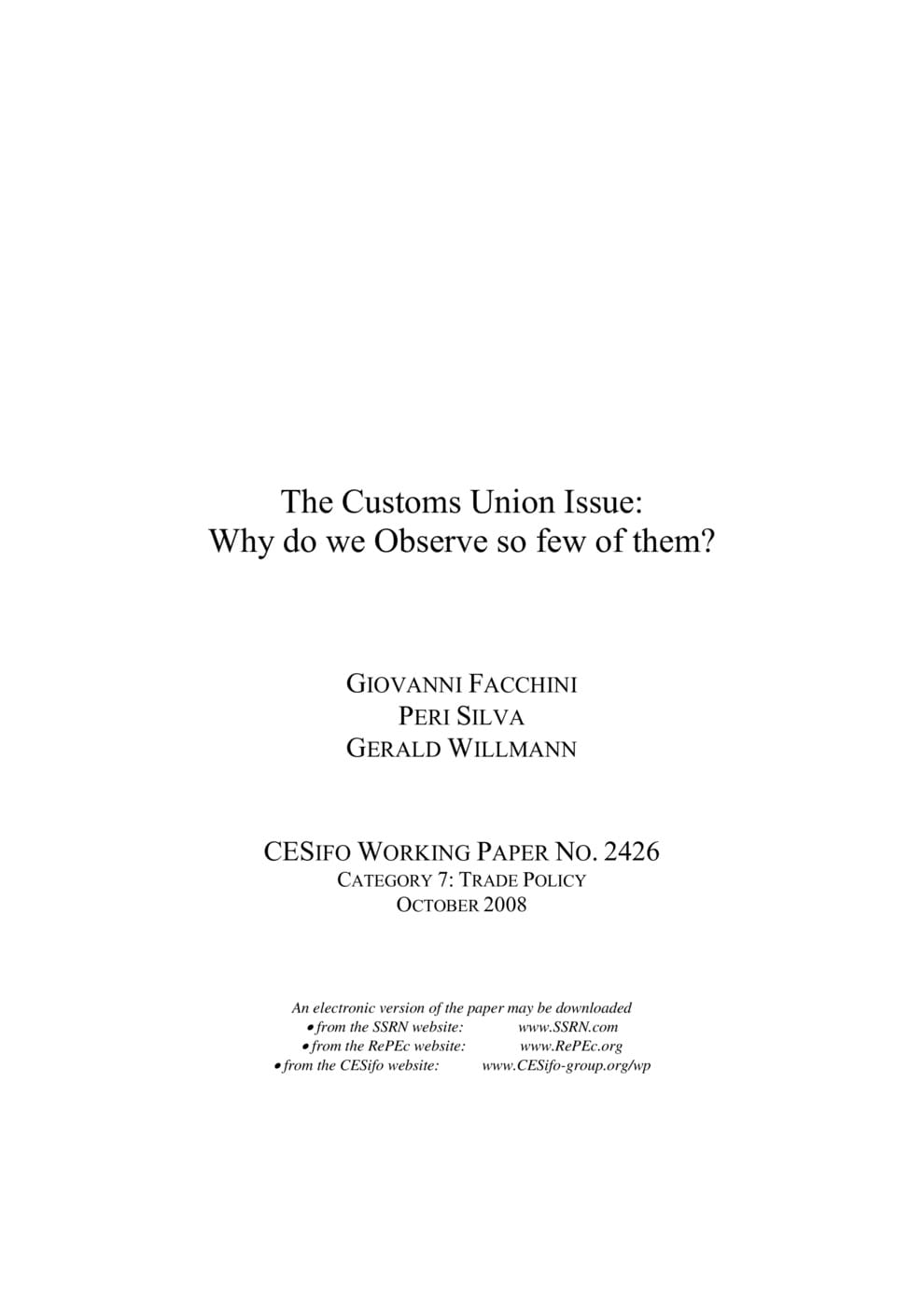The Customs Union Issue: Why do we Observe so few of them?
CESifo, Munich, 2008
CESifo Working Paper No. 2426

The number of preferential trade agreements has greatly increased over the past two decades, yet most existing bilateral arrangements take the form of free trade areas, and less than ten percent can be considered to be fully fledged customs unions. This paper develops a political economy model of trade policy under imperfect competition to provide a positive explanation for the prevalence of free trade areas. In a three-country setting, a representative from each prospective member is elected to determine the tariffs to be applied on imported goods. Under a customs union, the necessity to coordinate tariffs leads voters to strategically delegate power to more protectionist representatives. Contrary to most of the existing literature, we show that strategic delegation may imply that free trade areas increase welfare compared to customs unions. Moreover, the model also indicates that free trade areas are more likely to be politically viable than customs unions.
Trade Policy